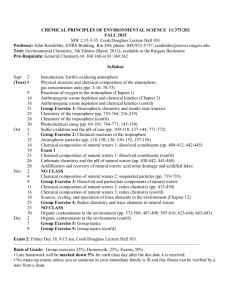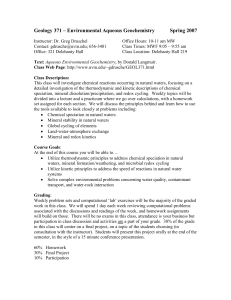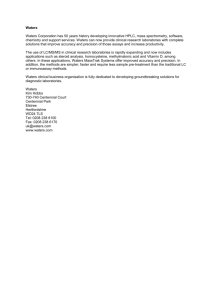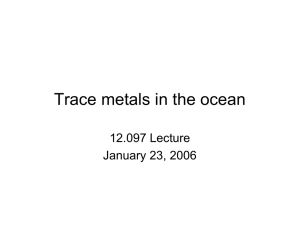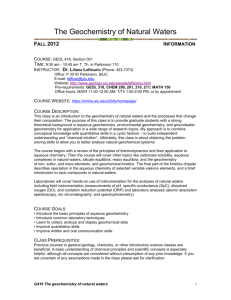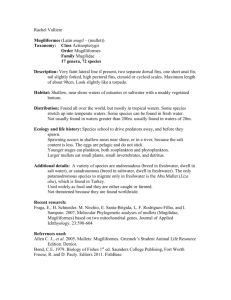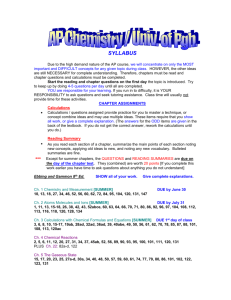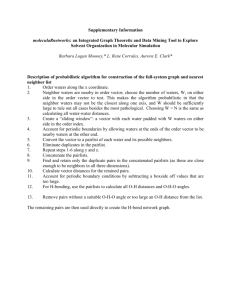The Geochemistry of Natural Waters: Surface and Groundwater
advertisement
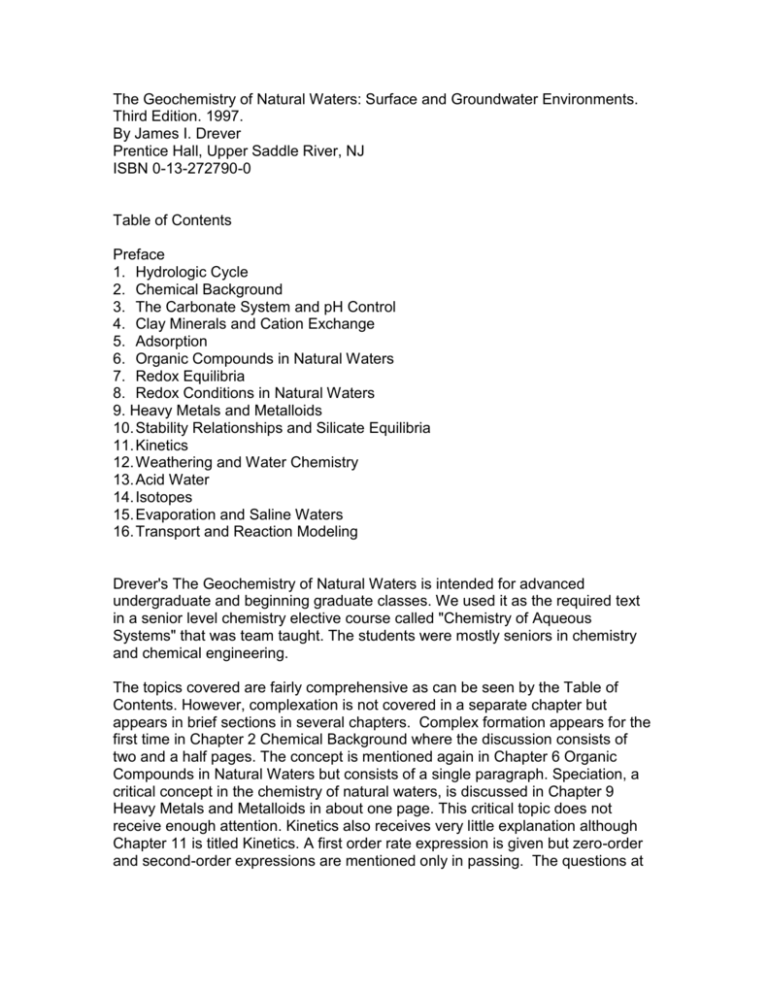
The Geochemistry of Natural Waters: Surface and Groundwater Environments. Third Edition. 1997. By James I. Drever Prentice Hall, Upper Saddle River, NJ ISBN 0-13-272790-0 Table of Contents Preface 1. Hydrologic Cycle 2. Chemical Background 3. The Carbonate System and pH Control 4. Clay Minerals and Cation Exchange 5. Adsorption 6. Organic Compounds in Natural Waters 7. Redox Equilibria 8. Redox Conditions in Natural Waters 9. Heavy Metals and Metalloids 10. Stability Relationships and Silicate Equilibria 11. Kinetics 12. Weathering and Water Chemistry 13. Acid Water 14. Isotopes 15. Evaporation and Saline Waters 16. Transport and Reaction Modeling Drever's The Geochemistry of Natural Waters is intended for advanced undergraduate and beginning graduate classes. We used it as the required text in a senior level chemistry elective course called "Chemistry of Aqueous Systems" that was team taught. The students were mostly seniors in chemistry and chemical engineering. The topics covered are fairly comprehensive as can be seen by the Table of Contents. However, complexation is not covered in a separate chapter but appears in brief sections in several chapters. Complex formation appears for the first time in Chapter 2 Chemical Background where the discussion consists of two and a half pages. The concept is mentioned again in Chapter 6 Organic Compounds in Natural Waters but consists of a single paragraph. Speciation, a critical concept in the chemistry of natural waters, is discussed in Chapter 9 Heavy Metals and Metalloids in about one page. This critical topic does not receive enough attention. Kinetics also receives very little explanation although Chapter 11 is titled Kinetics. A first order rate expression is given but zero-order and second-order expressions are mentioned only in passing. The questions at the end of the chapter ask the students to derive these expressions. The concept of pseudo-first order rate constants is not included. The two chapters devoted to redox reactions are well done. Chapter 7 Redox Equilibria does a good job of explaining pe-pH diagrams with step by step construction of several diagrams for the iron system. Drever uses the pe concept rather than Eh but clearly establishes the relationship between the two approaches. I found the one question at the end of the chapter on constructing a pe-pH diagram too difficult for the students because it required six different manganese phases be considered. I modified the question and asked the students to construct a diagram that only considered three phases (Mn 2+, Mn(OH)2, and MnCO3). Chapter 8 Redox Conditions in Natural Waters is a good basic treatment of the role of biogeochemistry in regulation of natural redox conditions. Data from sediment cores illustrated with several figures nicely support the concepts presented. There is only one problem with three parts presented at the end of this chapter. Most chapters have only a handful of questions of which a sub-set can be considered quantitative. Drever provides some information about computer models available for geochemical calculations but there are a limited number of examples presented in the text. Cindy M. Lee Clemson University
